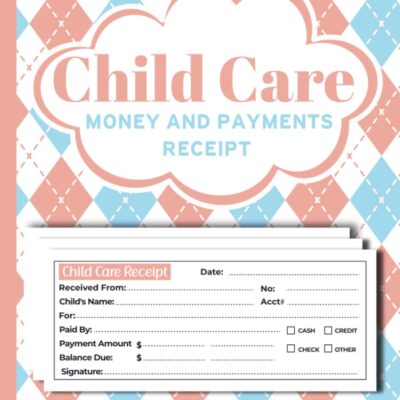
Having warning Signs can help you conceive. Every cycle is different, but you can arrange intercourse and ovulation to increase your chances of pregnancy. Knowing the signs is essential, even if you are not pregnant. Menstruation and pregnancy symptoms are explained. “Some women even keep track of when they ovulate to ensure they don’t get pregnant.” Want ovulation information? Four OB/GYNs mentioned ovulation symptoms. Continue everything.
What happens when you ovulate?
How is your ovulation day? When the ovary produces a mature egg, this is called ovulation. You probably learned this. It helps fertilize eggs. Every woman has many immature eggs at birth. Monthly, one is released. High LH levels let eggs leave the ovary and move down the fallopian tube during ovulation. Sperm may be able to fertilize it. Most healthy women ovulate monthly, weeks after menstruation.
Symptoms of ovulation
Early Warning Signs you can feel your eggs shrinking? Most women think a few things when ovulating, but each feels differently. Hormone changes recognize ovulation before and during ovulation. These are occasionally vital yet quiet ovulation signs. At Good Samaritan Hospital in Suffern, New York, doctor Patricia Pollio said pregnant women often experience these symptoms five days before and on ovulation. They may last one day post-ovulation.
If indications appear, you are not ovulating. It may occur. Most women don’t know, says Sapphire Women’s Health Group’s Chester, New Jersey, CEO Dr. Donnica L. Moore. Recognizing these ovulation markers may help you forecast it.
* Shifts in the cervical mucus
Cervical alterations indicate ovulation. When ovulation approaches, estrogen rises. Cervixes produce clear, stretchy egg-white mucus. Sperm swims to eggs quickly in open ovaries. Moore suggests scraping a little cervical mucus with a clean finger and stretching it between your thumb and finger to test for ovulation. Fruitful is goopy or wet and slippery.
* More sensitive senses
Certain ladies smell better in the second half of their menstrual cycle. They may ovulate. Your body may favor androstenone throughout this productive phase. However, studies show that ovulation changes women’s scent. Women believe they have more excellent taste.
* Pain or discomfort in the breasts
Hormones before and after ovulation might cause painful breasts and nipples. Some women feel soft before or after ovulation. Ob-gyn and reproductive endocrinologist Jenna Turocy, MD, of Columbia University Irving Medical Center in New York City, says breast pain can last throughout the menstrual cycle. “It is usually caused by changes in hormones that aren’t directly linked to ovulation.”
* Low-level pelvic or stomach pain
Women commonly ask, “Can you feel your ovaries?” Some say yes. One lower abdominal side hurts often. Why is ovulation painful? Ovulation may irritate your stomach, where the ovary releases the egg. Mittelschmerz. The duration of this ovulation adverse effect varies. You may have slight pain, vaginal bleeding, discharge, or nausea.
Moore suggested OTC medicines like Motrin for ovulation. Consult a doctor for severe or prolonged ovulation pain to rule out endometriosis or ovarian cysts. Moore suggests recording your ovulation symptoms monthly to determine your body’s norm. This helps identify unusual symptoms. Her advice: “If you’re unsure, check it out.”
Ovulation pain worries many women about having babies. Since discomfort implies egg release, it may not be fertilized. This ovulation side effect shouldn’t affect your fertility—you can be fertile without pain.
* Having spots or release of light
Turocy says hormones can induce ovulation spotting or dark discharge. The egg-protecting follicle might leak blood when it grows, expands, and separates. Blood turns brown; therefore, ovulation discharge may be red or dark brown. Just worry about permanent spots. Sexually active people should see a doctor for infection and ectopic pregnancy.
What happens to Libido?
Early Warning Signs is another indicator of ovulation is libido change. Ovulation enhances sex drive in some women. Nature may be telling them to procreate. Single women are less sexually excited during ovulation than couples, a study shows. Moore believes “almost anything can affect sex drive.” It doesn’t matter if you had a drink or are moody.
* Cervical changes
Your cervix may soften and open during ovulation. Cervix and salivary ovulation symptoms are more challenging to spot and practice.
Want to be more comfortable detecting cervical changes that may suggest ovulation? Moore proposes touching a tampon with one foot on the closed toilet seat and one on the ground. For many regular-cycle women, the cervix caresses lips pre-ovulation. Ovulation makes it more challenging, like touching your nose. A speculum-using OB can evaluate cervical changes and recommend home care.
* Sickness and headaches
Many women wonder, “Can ovulation make you sick?” Answer: yes. Estrogen and progesterone changes during ovulation might cause nausea and headaches. Turocy doesn’t consider them harmful or typical. “It’s important to see a doctor to rule out other problems if you’re having severe symptoms,” he adds. Regular headaches may be felt during ovulation. Research found that 50% of childbearing women with migraines have them during ovulation.
* Changing your body’s average temperature
Resting body temperature [BBT]. At cycle commencement, your basal body temperature is 97–98 degrees Fahrenheit, per the Cleveland Clinic. Your temperature drops before ovulation and rises 0.4–1.0 degrees afterward. Are you not experiencing this? Maybe you’re ovulating. When ovulating, your BBT is high. Track your basal body temperature for several months to spot trends and significant variations.
When do you produce eggs?
After checking ovulation indications, you may wonder when. As you may have heard, ovulation doesn’t always happen on the 14th day of a 28-day cycle.
Most reproductive-age women cycle 28–32 days. Ovulation occurs 12–16 days before menstruation, between days 10–19. Moore said healthy women ovulate 14 days before the period. On day 21 of a 35-day cycle, ovulation occurs. Ovulate on day 7 of a 21-day cycle.
UTMB Galveston associate professor Shannon M. Clark, MD, notes that ovulation times vary by person and cycle. Therefore, having your three-month plan helps. To check ovulation.
Women sometimes ovulate irregularly. Ovulation is rare in pregnant, menopausal, and on-time birth control users. Anovulation may be caused by polycystic ovary syndrome and early ovarian failure, according to the Cleveland Clinic. Antidepressants, sickness medications, and chemotherapy may stop ovulation. Chronic illness and extreme underweight or body fat may have an impact on ovulation.
To analyze sporadic or brief periods, see a specialist. “To have a child, you want to sort out the reason for your sporadic ovulation and work with a fruitfulness master to fix it,” Turocy says.
Indeed, even with sporadic cycles, ovulation happens 14 days before your period, permitting pregnancy.
Exclusive breastfeeding likely avoids cycling. A Clinic in Perinatology study found that breastfeeding doesn’t impair pregnancy because ovulation might occur before your first postpartum period. The baby may ovulate after other meals or bottles. Avoid surprising your child with a sibling using birth control.
For how long does ovulation proceed?
Early Warning Signs you may wonder how long women cycle. “Ovulation (the egg escaping from the ovary) is a pretty short process,” Turocy adds. Pollio claims the mature ovarian egg can be fertilized for 24 hours.
You can get pregnant without intercourse on ovulation day. Moore calls your cycle’s five days before and after ovulation a six-day “fertile window.” Pregnancy is most likely two to three days before and during ovulation.
National Library of Medicine: Eggs die after 24 hours. Your following period is when you generally conceive. Even without trying, birth control is advised.
Find Out When You Will Ovulate
These indications and OTC tests can help you determine if you’re ovulating or about to ovulate, whether you’re trying to get pregnant or just curious about your body.
* Monitoring of the body’s basal temperature
By keeping an eye on your basal body temperature for several months, you can identify ovulation. Take your basal body temperature using a digital thermometer every morning. Note the number. Don’t believe a small BBT spike—it might change by half a degree or more daily. A steady increase confirms ovulation. The information will help you schedule your pregnancy around your average ovulation date after a few months.
* Charting your periods
Early Warning Signs is another inexpensive and easy way to determine ovulation is to track your cycle dates for several months. Regular periods (25–35 days) indicate ovulation. Usually 14 days before period, ovulation. Note ovulation symptoms. Muscle cramps, cervical mucus, breast pain, water retention, mood fluctuations, and hunger are ovulation symptoms.
* kit for ovulation
Testing of LH in the urine determines ovulation. Opposition occurs 10–12 hours after LH rises on day 14 or 15 of a 28-day run, which makes kits work. To mature the egg, LH must increase by 14–27 hours.
After peeing on the stick, check the ovulation kit for a line. Ovulation happens in 24–48 hours if the line matches. Retest in 12 hours if close to call. Most kits provide enough sticks for five days, but check the expiration date since most last two years. Many ovulation prediction tests recommend taking them in the morning, but most can be used anytime. Test daily simultaneously, and don’t drink for four hours for optimal results. Pee will concentrate, and LH will be simpler to find.
You must know when to utilize an ovulation prediction kit to optimize its benefits. Your charts help you choose the best time if you cycle regularly. Check for ovulation if periods are erratic.
* Check on fertility
Early Warning Signs predictive ovulation tests allow you 24 hours to conceive. Your five most fertile days can be found on a fertility monitor. LH and estrogen are measured to determine your two most fertile days and the one to five fertile days before and after them. For customized fertility measurements, some trackers recall your last six cycles. Because they provide more information, watches cost more than ovulation kits.
Knowing your ovulation date can help you conceive and explain sudden symptoms. Know ovulation signs to prepare for any objective. You can predict ovulation by understanding your body.
Conclusion
Early Warning Signs of ovulation empowers women who know about their periods and their ability to have children. By noticing these subtle changes, women can better understand their bodies and take proactive steps to optimize reproductive health. Whether planning for pregnancy or monitoring overall health, being attuned to ovulation signs contributes to greater wellness and confidence in reproductive choices.
If you want to learn my #1 Always Infinity Feminine Pads for Women, Click Here Now.





